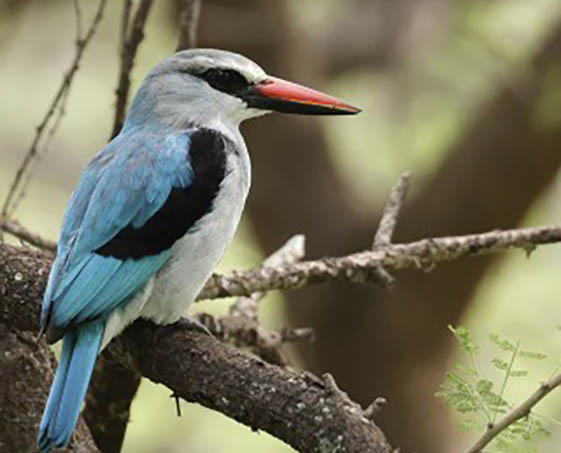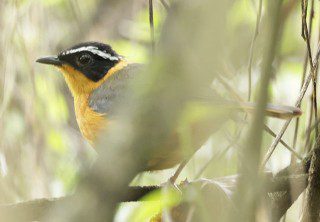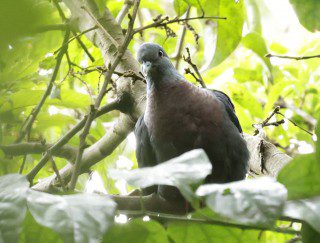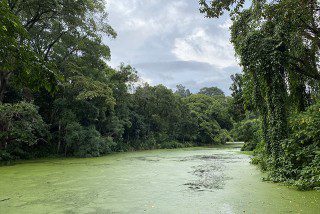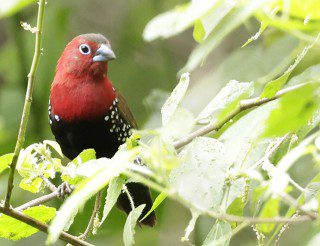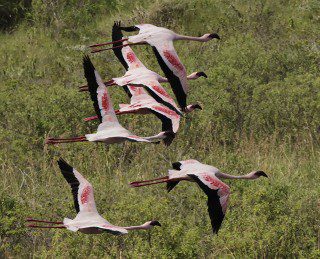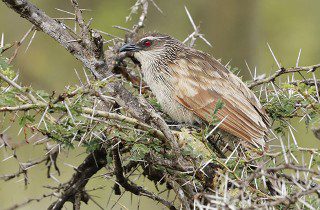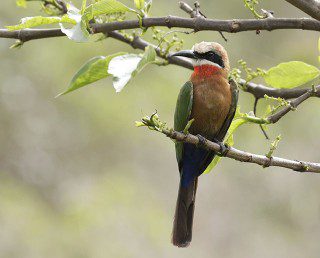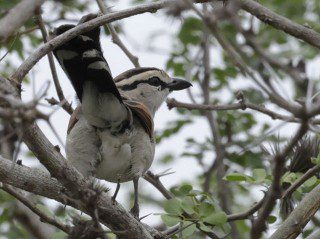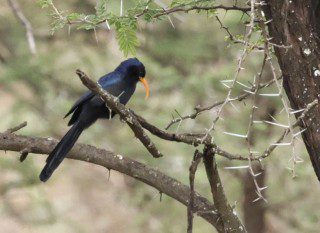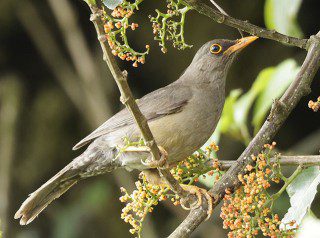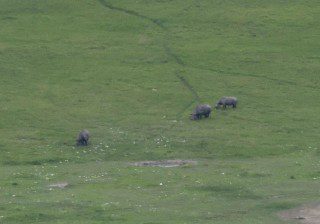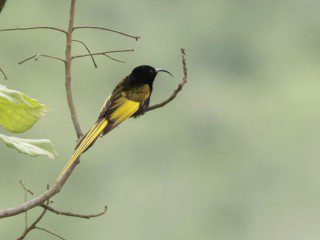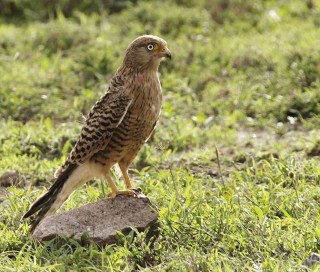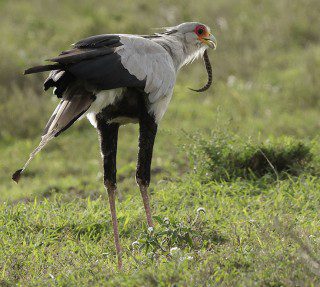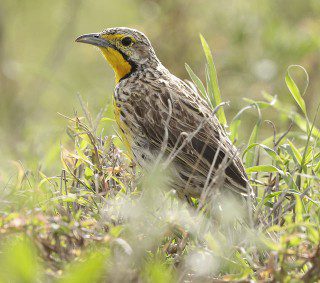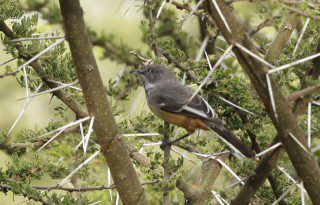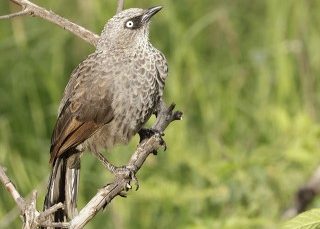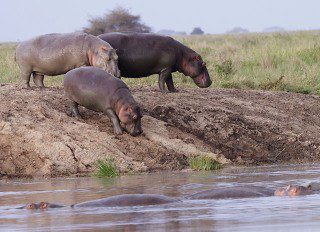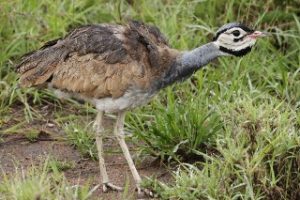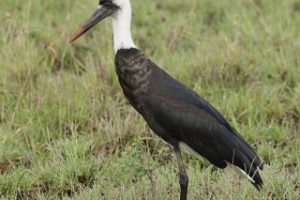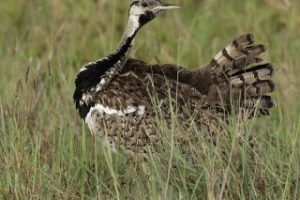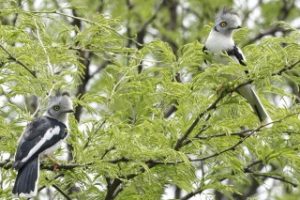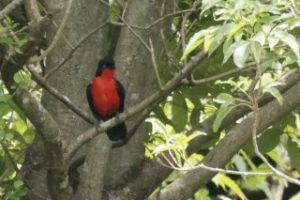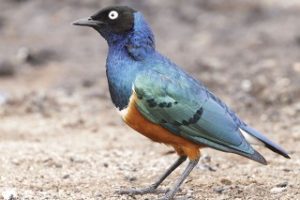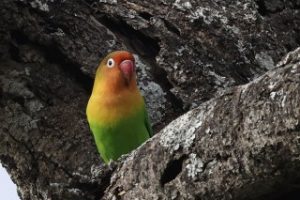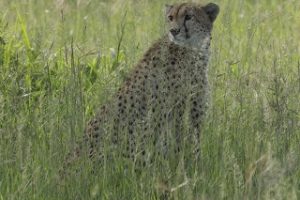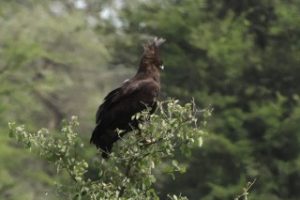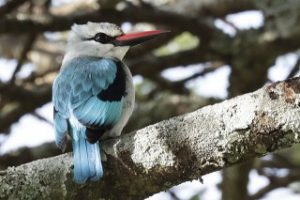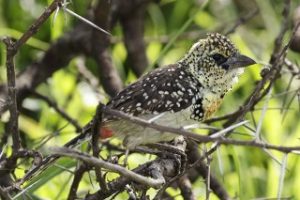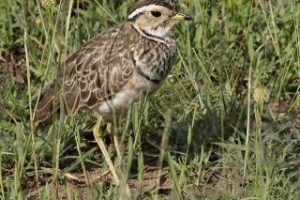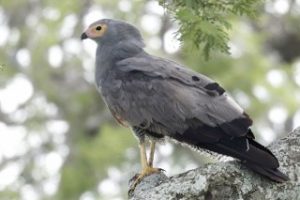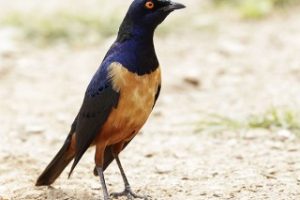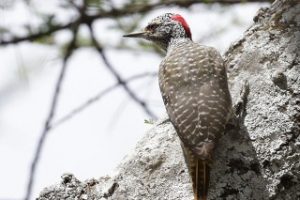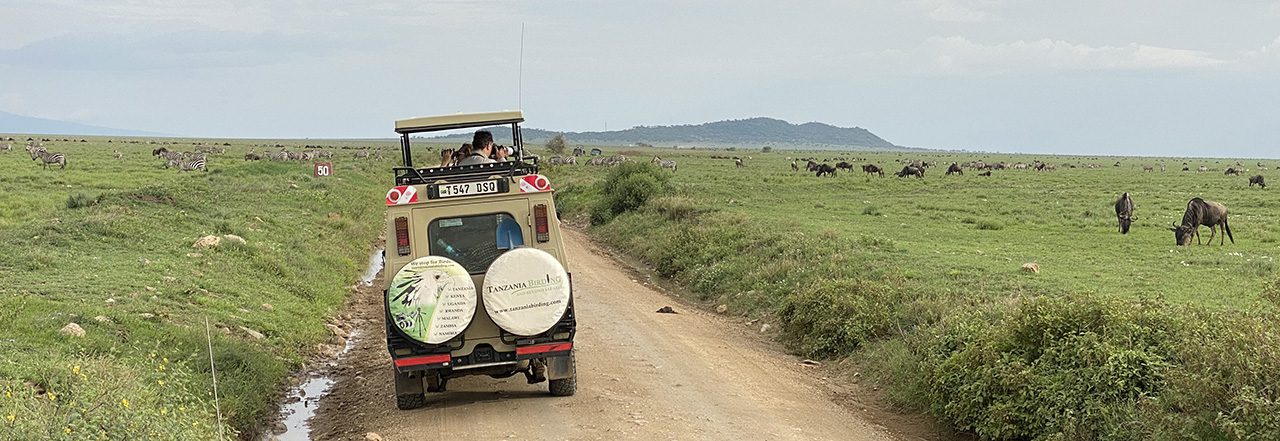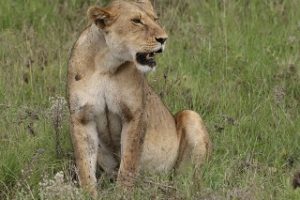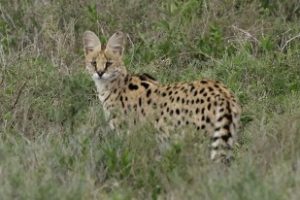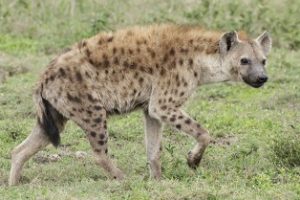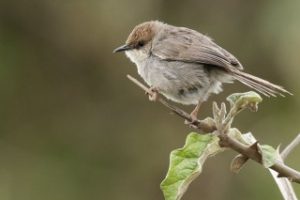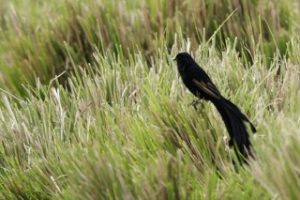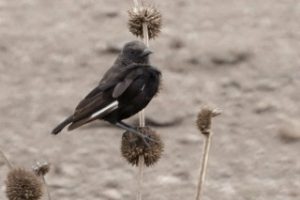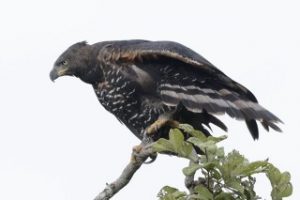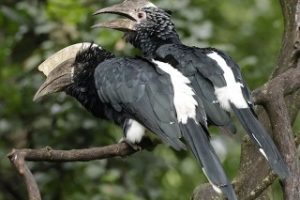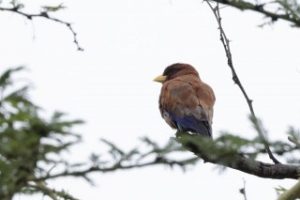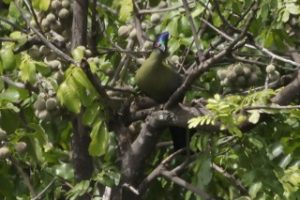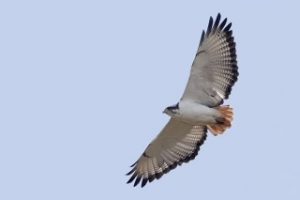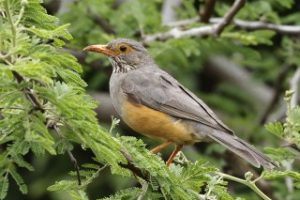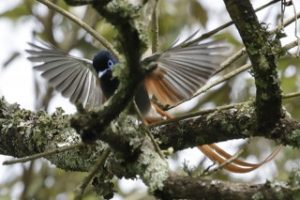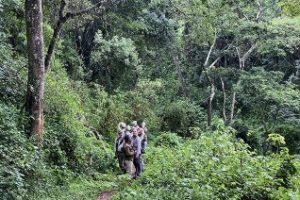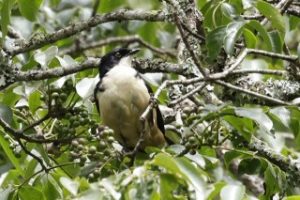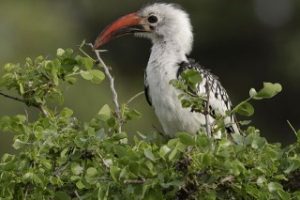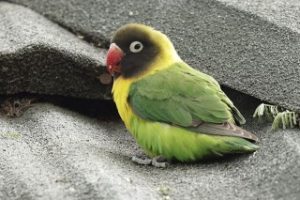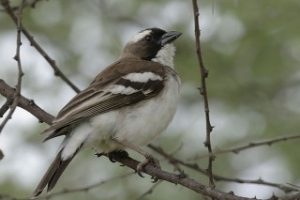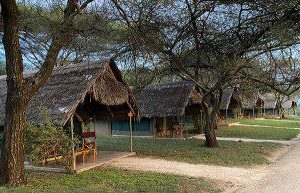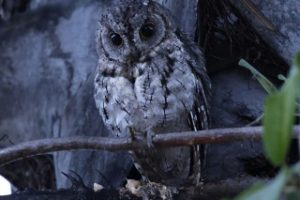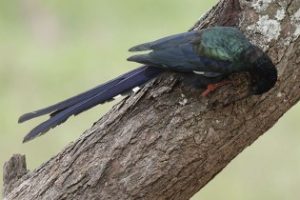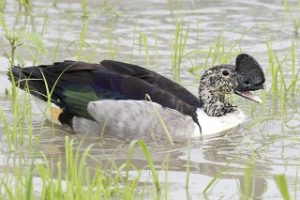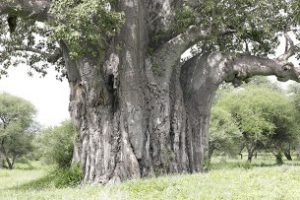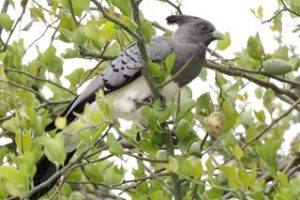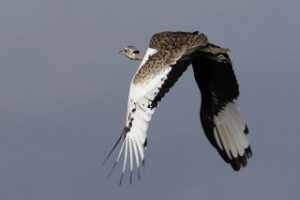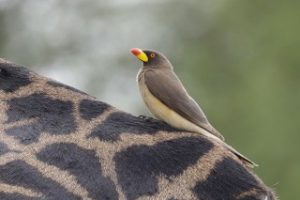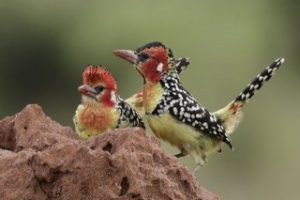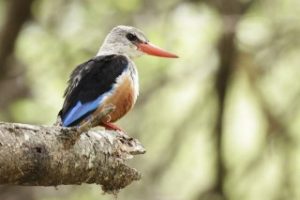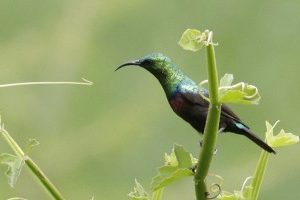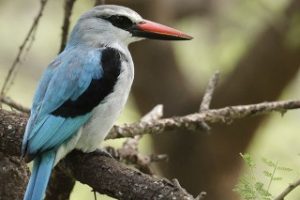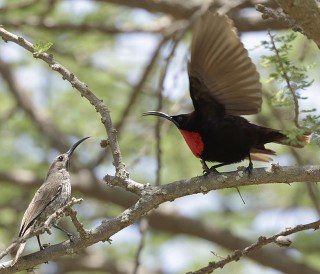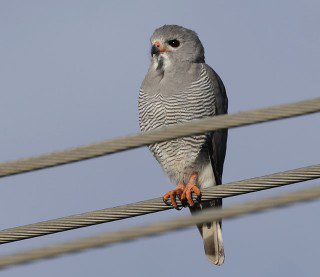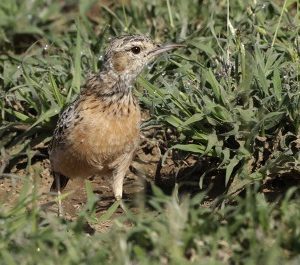NORTHERN TANZANIA BIRDING
Arusha National Park, Serengeti National Park, Lake Manyara National Park
THE GREATEST WILDLIFE SPECTACLE ON EARTH
Birding & Wildlife in the Serengeti, Ngorongoro Crater & Beyond
TOUR RUNNING AMIDST CLOSURE OF INTERNATIONAL BORDERS DUE TO THE COVID-19 PANDEMIC OUT BREAK.
Birds & Wildlife in the Serengeti & Ngorongoro Crater
(07th – 17th February 2022)
Participants: Mr Janne Aalto
Tour Leader: Anthony Raphael
Safari Driver Guide: Edson and Geitan
Ground Tour Operator: Tanzania Birding and Beyond Safaris
Tour Pace & Style: A Birding Tour Group
DAY TO DAY TOUR NOTES
Outside the airport there were lots of birds. A flock of Little Swifts was flying over but also many lifers were seen. 3 species of “turtle doves”, Mourning Collared, Ring-necked and later also Red-eyed Doves were seen. Amazingly colorful Superb Starlings and Pied Crows were walking between the people, Tricolored Bulbuls were calling and on the sky we saw Lesser Striated Swallows, White-rumped, Nyanza, Horus and Mottled Swifts. On the bushes we saw sunbirds which Scarlet-chested and Collared Sunbird were identified. Further along the road there was a dead tree where a Stripe Kingfisher and a black morph Ovambo Sparrowhawk visited. Also a Black-headed Heron was seen flying by, African Pied Wagtails were perched on the roof over us and some Red-winged Starlings were also seen. I really didn’t know which way to look.
After quite a long waiting our Tanzanian Birding and Beyond Safaris guide Anthony Raphael and drivers Edson and Geitan arrived and timing was good as only soon after that the last few of our group got out from the airport. Fever had been tested from some but luckily we all were feeling well and ready to go. Soon we packed our luggage to 2 big safari-cars and were ready to hit the road.
We soon stopped along the road to do some birding and Tawny-flanked Prinias, Blue-naped Mousebirds, a Black-chested Snake Eagle and a Variable Sunbird were seen. And once we were driving again we saw Red-billed Buffalo Weavers, a Fork-tailed Drongo and Long-tailed Fiscals.
We drove about a half of an hour towards Mt Meru and then stopped to walk in a small forest track and it was difficult as there were quite a few birds and I had no idea what most of them were… African Palm Swifts were flying on the sky, an African Emerald Cuckoo was found on the top of a tree, a couple of Hadada Ibises were on one roof and a Rüppell’s Robin-Chat, White-eared Barbets and African Grey Flycatchers were also found. Tropical Boubous were calling with funny voices, also Tambourine and Emerald-spotted Wood Doves were not only heard but also seen. On the top of one tree there was a perched Palm-nut Vulture and a back-color of a Grey-backed Camaroptera was seen after some trying. Anthony found several White-starred Robins that were actively singing but impossible to see in the dense vegetation. A White-browed Robin-Chat was seen and identified once the tail was seen well and also Kenrick’s Starlings and an Eastern Bronze-naped Pigeon were seen.
Finally we continued to Ngare Sero Lodge grounds where new birds were found all the time. A Green Malkoha was calling all the time and also seen pretty well and also a Golden-tailed Woodpecker was seen before we walked down to a pool where we saw Reed Cormorants, Thick-billed and Taveta Weavers, some African Jacanas, a Black Crake, Bronze and Red-backed Mannikins, Black-throated Wattle-eyes, a Black-backed Puffback, a stunning African Fish Eagle and an amazing Giant Kingfisher. Some familiar birds were also seen like Little Grebes, Moorhen and a Great Egret.
Anthony was all the time pointing new birds with a pointer and we were all the time asking what were the calls too – and they were always new species. Northern Crombec, Brown-hooded Kingfisher, Lesser Honeyguide, Green-backed Honeyeater, Grey-olive Greenbul, Black Cuckooshrike and on a short walk also a funny Hamerkop and a couple of African Black Ducks were seen. Some calls heard were a Long-crested Eagle, a Red-chested and a Klaas’s Cuckoo, a Little Rush Warbler and an Augur Buzzard.
After some walking we climbed a bit higher along the pool to have lunch. It was difficult to eat as there were too many birds to see and to photograph everywhere around us. There were also a several Guerezas climbing on the tree on the opposite side of the pool which were nice to follow.
After the lunch we walked around the area more. Some of us were resting a little after a very long traveling and some were concentrating to take pictures. But with Mika we headed to walk along a small path inside the forest. In the beginning it was quiet as the day was already warming up but then we found a couple of Red-throated Twinspots, African Firefinches and a Little Greenbul. Soon we met Hannu and “Henkka” and continued along a stream towards the pool and found a Spectacled Weaver and a couple of Mountain Wagtails and so on. Also some Blue Monkeys and Ochre Bush Squirrels were seen.
Once we were back on the lodge we found some Brown-breasted Babblers and a Cardinal Woodpecker close to the parking place. Also an African Grey Hornbill and a Silvery-cheeked Hornbill visited the treetops. Soon we were ready to move on and after about 100 meters driving we had to stop again as there were Yellow-fronted Canaries and some African Firefinches on a small meadow.
It was already getting dark when we arrived to Arusha and parked to a garden of Korona Villa (I didn’t really like the name of the hotel but it was nice!). We were warmly welcomed and after we had carried our luggage to our rooms, we had dinner ready. After the dinner we kept a log which was long even though we had only done the Introduction to birding (days birding was in our tour-program with that name).
On the 8th of February we had quite late breakfast and soon most of us were out and waiting for our cars to arrive. There were quite a few birds and we saw Speckled Mousebirds, a couple of White-necked Ravens and a couple of pure-lookin Fischer’s Lovebirds but most of these birds looked like hybrids. In Arusha most birds are hybrids between Fischer’s and Yellow-collared. At 7:30 a.m. our cars were finally there and we left towards Arusha National Park. Anthony was every second day in different car and this time we were on so called car one with Normaja and Kapanen couples.
We stopped a couple of times on the way and the first stop was great as we saw a couple of Grey-crowned Cranes and there were also an African Sacred Ibis and a Three-banded Plover on the rice-field. After we had seen some Northern Fiscals and a couple of African Stonechats, we arrived to the gate of the National Park. Our drivers had to go to do some paper-work, so we were free to walk in the area a little bit. We found a funny-looking Chinstrap Batis, a Cape Robin-Chat, Bronzy Sunbirds, a Yellow-breasted and a Black-headed Apalis but soon we were in a car again and driving to the park. It was not allowed to get out from the car in the parks because of there were wild animals like Lions and Leopards. So we could get out only in some places like picnic-places.
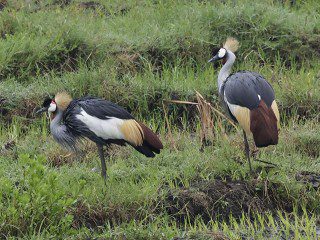
After we had seen a couple of Scaly Spurfowls and Little Bee-eaters we came to an open area where we saw the first mammals – Cape Buffaloes and Plains Zebras with some Common Warthogs. Also the first Red-billed Oxpecker was seen on a back of a buffalo. There was also a stunning Saddle-billed Stork close to the road and also a Northern Fiscal and some White-winged Widowbirds and Red-billed Queleas.
Slowly we got higher and higher to the mountain forest and then stopped next to a huge tree that the road went actually through the trunk.
Next to this tree we got out and there were lots of birds in the tree and everywhere around us. Anthony started to play tape for some target birds and the first target was found quite soon. First we heard some harsh calls but the saw a colorful bird on the top of the tree – Hartlaub’s Turaco! We saw it only behind branches and in flight but some other birds were easier to see like African Dusky Flycatchers, a couple of Brown Woodland Warblers, Mountain and Strip-faced Greenbuls, a Grey-headed Nigrita, Broad-ringed White-eyes and then the tape worked again as another colorful bird arrived to the top of the tree – a Bar-tailed Trogon! It was also hiding well but after some trying we managed to get some kind of pictures.
Once we continued we started to see more mammals; Masai Giraffes, Cavendish’s Dik-diks, a Harvey’s Duiker, Guerezas, Cape Bushbucks, Ellipsen Waterbucks and then also a stunning Serval! More Cape Bufalloes and Zebras were also seen and of course we took lots of pictures both animals and birds. Some birds we saw were Helmeted Guineafowls, African Yellow Warblers, Red-capped Larks and Little Bee-eaters.
Then we arrived to Momella Lakes and stopped to a picnic-place close to the first lake. We had lunch there on a perfect spot to see birds and also mammals. While eating we saw Baglafecht Weavers and a White-fronted Bee-eater was catching insects from the closest bushes and trees and from the lake we found a Southern Pochard, a couple of Red-billed Teals, some White-breasted Cormorants and from the shore a couple of Blacksmith Plovers. There were also 3 Common Hippopotamuses on the lake but quite far! And in a short bush-visit we found a small flock of Crimson-rumped Waxbills.
Soon we were in a car again and we had opened the roof so we could either sit down and watch through the windows or stand on the bench and look much better to all directions as I was doing most of the time. On the next lake we found lots of Lesser and Greater Flamingoes, Cape Teals, Black Saw-wings, a few Banded Martins and a lonely male Maccoa Duck. Finally I also saw a White-browed Coucal which I had already missed a couple of times and also a Moustached Grass Warbler, a Spot-flanked Barbet, a Diederik Cuckoo, African Black Swifts, a Moustached Tinkerbird and a Yellow Bishop were seen. Also Zebras, Giraffes, Buffaloes and Warthogs were seen and photographed and lots of Olive Baboons and some Blue Monkeys too. But not all birds were so exotic, we also saw Black-winged Stilts, Little Grebes (amazing numbers), Ruffs, Wood Sandpipers, a Green Sandpiper, a Common Sandpiper and so on.
Suddenly our car stopped and our driver had seen something flying in the forest. We drove back a bit and Anthony started to play tape again. Then the group on the second car saw a Narina Trogon flying inside the thick vegetation. I saw to tree-tops only through a tiny hole between all branches and leaves but I was lucky, the trogon was perched right on that spot! It was impossible to see from any other place from our car, so we all had to come to stand on my seat in turns. And after all we all managed to see it and get some pictures too.
We continued to savanna and there the next species was a Pangani Longclaw. The first of many cisticolas was identified (I have no idea how many we had already left unidentified) and it was a Singing Cisticola. We also saw a small flock of African Green Pigeons and the second cisticola got a name Trilling Cisticola. Also a colorful Black-fronted Bushshrike was seen briefly and other species we saw were a Black-headed Oriole, an Eastern Grey Woodpecker, a Southern Citril and a Pin-tailed Whydah.
Finally we were in the end of the tour and at the gate again. There we walked again a little while paper-work was done. Then we continued to Arusha and Korona Villa where we had a dinner again. Then we still had a long log before we could go to sleep far too late.
On the 9th of February we had breakfast again at 6:30 a.m. and we had managed to order the cars to arrive a little bit earlier and we were now free to leave earlier as there was no late-opening gates on the way. On the garden we saw familiar birds but also a Village Indigobird was perched on a wire. Soon we were on the road and driving towards Serengeti. Luckily we could stop the car if it was needed once we had driven through an area that was told to be a military-area. So we started to see birds and saw Fischer’s Sparrow-Larks, a Brown Snake Eagle, Yellow-billed Kites, a Lanner, White-faced Whistling Ducks, Crowned Lapwings, Lesser Masked, Rufous-tailed, Speckle-fronted and White-headed Buffalo Weavers, Kenya Sparrows and when we stopped to fill the tank of our car, we saw a couple of Yellow-collared Lovebirds. Also big flocks of Abdim’s Storks were seen on savanna and on the sky and then first White-bellied Go-away-birds.
Finally we stopped for a short 30 minutes walk to an acacia forest but there were so many birds that we stayed there at least an hour. A Grey Wren-Warbler, Taita Fiscals, Red-cheeked and Blue-capped Cordon-bleus, a Purple Roller, a Southern Black Flycatcher, a Black-throated Barbet, Red-fronted Prinias, a Rosy-patched Bushshrike, Brimstone Canaries, a Spotted Palm Thrush, a White-browed Scrub-Robin, a Hildebrandt’s Starling, Yellow-crowned and Brimstone Canaries, Northern White-crowned Shrikes, Red-faced and Rattling Cisticolas, White-eyed Slaty Flycatchers, Beautiful and Eastern Violet-backed Sunbirds and an Abyssinian Scimitarbill were seen. We could have easily stayed in this place for whole day as there were so many birds to see and photograph but we still had many things to do and a long drive.
We continued driving and on the way we saw an Eastern Chanting Goshawk, a few Abyssinian Wheatears and a Cinnamon-breasted Bee-eater. We also saw the first masai-villages where mud hut looking buildings were surrounded by a thick fence made of big branches. We also saw a funny-looking Flap-necked Chameleon crossing the road.
Then we turned to Ngorongoro gates where were lots of Olive Baboons and also some Reichenow’s Seedeaters, a Red-fronted Tinkerbird and a couple of Brown-headed Apalis were seen. Then we continued higher to a view-watching place where an amazing view opened to Ngorongoro crater! There we ate picnic-lunch (which was again really good by the way) but it was once again difficult to concentrate eating as there was so much to see!
Some of us had put up telescopes and were watching to the crater where were lots of animals. And soon the first Black Rhinoceroses were found! I also saw an African Elephant with my binoculars but Rhinos were so much more rare that I really needed to go to see it with a scope. After all we found 4 Rhinos but of course they were very far on the bottom of the crater. But there were too many birds again so I had to start looking at them too! Again they were all new species.
We saw some Mblulu White-eyes, an Abyssinian Thrush, a Red-fronted Barbet, a Streaked Seedeater and an amazing Golden-winged Sunbird. There was really no time to visit toiled – I did that and missed a couple of lifers. It was a bit frustrating as I had no idea which birds were going to be difficult to see later as all birds were different in every place…

Once we were back through the gate, we continued towards Serengeti. On the way we saw first huge Kori Bustards, Greater Kestrels, Red-capped Larks, African Pipits, some Cape Rooks, Spotted Thick-knees and then we started to see amazing numbers of mammals! White-bearded Wildebeest and Plains Zebras were in huge numbers but also Cape Buffaloes and Thomson’s Gazelles were a lot. There were animals both sides of the road as far as we could see! We also saw some Common Elands, Serengeti Topis, Grant’s Gazelles, African Golden Wolves and Spotted Hyenas. The big migration was going on! There would have been so much to see and photograph but unfortunately we were in a hurry as we had to be at Serengeti gate at 5 p.m.
We drove quite a long time along very poor road very fast and we could make stops only if it was really necessary – so all the possible lifers were checked and a couple of better pictures taken. But we were really driving so fast that we were worried if we soon have only broken cameras.
So finally we got the first pictures of a Greater Kestrel, a Black-bellied Bustard, a Yellow-throated Longclaw, a Capped Wheatear and finally also Common Ostriches. And just before the gate we made a stop to photograph a Secretarybird that was swallowing a snake close to the road and there was also a lonely Lion resting behind some vegetation a bit further! Amazing!
Finally we were at the gate to Serengeti National Park and again drivers had some paper-works to do. So we were able to straighten our legs and walk a little. A Brubru, a Red-faced Crombec, Buff-bellied Warblers and a Banded Parisoma were found. There was also a familiar, but more difficult to identify, bird on one tree but after all it was quite easy to identify as an Icterine Warbler. Then we again got into our cars and started driving towards our lodge.
Luckily we were not in so bad hurry anymore so we could make some more stops. Anthony took his phone and tape-lured a flock of Black-lored Babblers visible. Also a couple of Coqui Francolines were seen briefly before the sun started to set. The road was still very bad and soon we were driving very fast again. It was already getting dark when we saw some vultures which were identified as White-headed and a Lapped-faced Vulture and later we saw some more unidentified vultures on the dead trees. Also a couple of flocks of Wattled Starlings, a White-bellied Bustard and some Marabou Storks were seen. It was already dark when we stopped briefly along a pool where were Hippoes swimming and also a couple of them next to the pool.
Then it started to rain very hard! Finally we parked to Thorn Tree Camp parking place where the crew was welcoming us with umbrellas. We walked under umbrellas to the reseption and our luggage were carried there too. And soon we were enjoying a good dinner and after that we still had a log to do.
When the log was done we had to ask an employer to walk with us to our tent as it wasn’t aloud to walk there by yourself – we were in the middle of Serengeti and there were many animals living next to us!
On the 10th of February it had been very heavy rain at night, but luckily weather was nice in the morning. When the sun was rising, we walked to have breakfast and got several Grey-capped Social Weavers to join us even inside the tent. After the breakfast we climbed to our cars and started driving inside Serengeti.
It was now rainy season and very green everywhere, but the rains had started very late so all migrating animals were late on their usual schedule and still on the way to Serengeti. That’s why we had seen so many mammals on the previous evening – they were close but not yet inside the park. So we didn’t see a single Gnu and only a few Zebras inside the park.
Some birds we saw early in the morning were Nubian Woodpecker, Dark-chanting Goshawk, Village Weaver, funny-sounding Flappet Lark, Bearded Woodpecker, Silverbird, Foxy Lark, Grey-backed Fiscal, White-tailed Lark, Black-faced Waxbill, Meyer’s Parrot, Slate-colored Boubou, Bateleur, Purple Grenadier, Pin- and Straw-tailed Whydah, Yellow-bellied Eremomela, Croaking Cisticola, Gabar Goshawk, Grey-headed Silverbill, African Hoopoe, Tanzanian Red-billed Hornbill, Magpie Shrike, Rüppell’s Starling, Bare-faced Go-away-bird, Vitelline Masked Weaver and Usambiro Barbet. We also got nice pictures of Black- and White-bellied Bustards, a Woolly-necked Stork and so on. We also saw some mammals like Impalas, Serengeti Topis, Common Dwarf Mongooses, Cavendish’s Dik-diks, Cape Buffaloes with some Yellow-billed Oxpeckers on their backs and also some Leopard Tortoises and a flap-necked Chameleon were seen. We also got familiar with tsetse-flies, but luckily there weren’t many of them or other insects either.
After quite a lot of driving and birding, we arrived to a high area where were a couple of meters long spiky trees here and there. This was area for rare Karamoja Apalis. So we started to stop every couple of hundreds of meters and played tapes in both cars. Anthony told that this species was difficult to see as, if it comes, it comes quiet, stays in a tree for a short time and then disappears. We had once again continued after a long try when we our friends on the other car called us that they had found one bird. We managed to get back (frustratingly slowly) but luckily the bird was still there and we got this rare endemic to our list! In same time there was a herd of Elephants walking on the savanna behind the spiky trees so it was very nice moment!
We kept on getting further and soon found a Pygmy Falcon on a tree next to the road. Then Anthony started playing the tape again but now from a moving car. But it seemed that all birds had disappeared, but then a flock of birds flew over us and they were exactly what we had been searching for – Grey-crested Helmetshrikes! Shrikes were flying around and only shortly stopped to some distant bushes but after all we managed to get some pictures. These birds were really funny-looking.
After a short drive we stopped to a plateau where we could see were big trees further on the mountain side. Soon we saw a Woodland Kingfisher and then the next bird was a nice surprise – a beautiful Black-headed Gonolek! Almost same time the tape lured an amazing-looking Schalow’s Turaco to the trees further and after some time we could see it in flight but then it also perched quite openly but unfortunately quite far. Von der Decken’s Hornbill landed very close to us and soon the tape worked again as a couple of huge Eastern Plantain-eaters were seen in flight on the top of very distant trees. This had been one of the most memorable stops ever – we had seen several amazing birds in very short time!
We drove quite fast back to our camp and after the lunch we had some time to photograph common birds in the camp. I got pictures of Superb and Rüppell’s Starlings and Swahili Sparrows, also a Red-throated Tit was found from the parking place.
In the afternoon we drove in the park again and saw Desert and Lyne’s Cisticolas, a Long-crested Eagle, Fischer’s Lovebirds, Grey-breasted Spurfowls and Arrow-marked Babblers.The best observation was a Cheetah that we saw with help of a car that stopped to tell us about it. The cat had disappeared to the vegetation for some time ago but luckily we found it quite soon. And after some waiting it got up and gave us better views! We were very happy!
Once we were driving again I finally saw a Pearl-spotted Owlet that I had missed earlier and also the first Wahlberg’s Eagle, an African Hawk-Eagle and a couple of Yellow-throated Bush Sparrows were seen. In the evening we had really good light for photographing and as we were in no hurry, we got very good opportunities to get pictures. Edson was stopping every time we asked and he was actually the most talkative of the locals and told us many interesting stories during the trip.
We were back in the camp before the sunset and then we had dinner and log again. I got into our tent again so that a local was escorting me. Mika stayed up much later once again.
On the 11th of February an Elephant had been walking through the camp and very close to some of our tents. It had also left a huge pile of shit in the middle of the path. After the breakfast we headed to the park and our goal was to see some more birds but also the missing mammal of the big five list – a Leopard. All cars in the park had radiophones and all big cats and so on were told to other groups, so we could still concentrate on birds and keep our radio on and then go twitching.
We were driving a bit more moist areas and headed towards North first. We saw Meyer’s Parrots, a Lesser Kestrel, a couple of Dark Chanting Goshawks, Usambiro Barbets, a Pied Wheatear, a Black Crake, Woodland Kingfishers and so on. It seemed that lifers were getting more difficult to get. We also saw Common Hippoes, Black-backed Jackals. Dik-diks and so on.
Finally we found a few Three-banded Coursers and then some Yellow-billed Storks, a couple of Chestnut-banded Plovers, a Black-winged Red Bishop and also a couple of Crocodiles. We also saw lots of Hippos and a couple of them were fighting a long time. It was fun to see a Common Sandpiper walking on the backs of Hippo together with a Red-billed Oxpecker.
When we were driving again we saw some flocks of Yellow-throated Sandgrouses in flight and then found a couple of Black-faced Sandgrouses along the road. Then Edson found a stunning Verreaux’s Eagle-Owl that was perched on a tree. Other observations were a Bohor Reedbuck that was laying down next to the road and a huge Python that crossed the road.
After one more cisticola, Pectoral-patch Cisticola, we found an African Harrier-Hawk working on one tree. It was robbing some nest and we could get really good pictures of it. I was happy to see another species that I had missed earlier. Then we still saw a Hooded and a White-backed Vulture on the sky before next to a small airfield we found a small pack of Lions laying on the shadows of trees. One bigger Lion came closer but behind some vegetation to eat a carcass of a Cape Buffalo. We also saw several Kongonis and on a small pool we saw a Common Snipe, a Wood Sandpiper, a Kittlitz’s and a Three-banded Plover.
We walked a little bit on the picnic-place next to the airfield and again got some pictures of common birds like tame Hildebrandt’s and Rüppell’s Starlings, Slate-colored Boubous, a Red-throated Tit, Grey-headed Silverbills, a Spotted Palm Thrush and also cute Common Dwarf Mongooses and Eastern Tree Hyraxes.
Once we were moving again we saw the same Lions again and now one female was drinking by the pool! So we finally got good pictures of this massive cat! Next we continued towards south quite fast but we still saw a flock of Collared Pratincoles, Black-bellied Bustards and finally a few Two-banded Coursers with one chick too.
Once again when we were driving fast there started to be amazing numbers of mammals! We saw thousands and thousands of White-bearded Wildebeest and Plains Zebras but also Spotted Hyenas, Secretarybirds and Tawny Eagles very well. I could have watched there masses of animals for a long time but we were in a hurry.
The next stop was made in Serengeti Media Center where we walked a little bit again. It was a nice place but in the middle of hot day there weren’t much birds. But we got pictures of different kind of lizards – Common Agama was the most colorful and thus easy to identify. And soon we were driving again and more Hyenas and also an elegant Serval was seen. It was already getting late when we started to get close to Ndutu and there we saw quite a few vultures on the top of trees.
Finally we were in Ndutu Safari Lodge where we went to eat immediately. After a few minutes a Common Genet joined us and stared at us from the ceiling where it was perched. Then after the dinner our log got an awful twist as one of us had made a covid test and got a positive result! We first discussed what we could do but then together with Anthony we all agreed that we couldn’t do anything more than keep distance to all other people. We were in the middle of Serengeti and we had already been together for days, so we all probably had the virus already. And after all we were all the time just together, so we could only hope that nobody gets more sick. And after all it seemed that locals where happy if there just was ginger-tea on every meal.
But anyway I had difficulties to get asleep and of course in early morning I started to feel some itching on my throat…
On the 12th of February we woke up and had breakfast same at time again and then we had to split into two groups. In our original program we were going to visit both Ngorongoro crater and slopes in the same day but we were just too slowly and making many stops all the time so Anthony had realized that it was impossible to do all this in one day. So one group was going to the crater and another one to the slopes. In crater there would be more mammals to see and of course also some birds in the crater lake too, but on the slopes there would be more mountain-birds which usually are very local and difficult. So after all I decided to go birding. I had already seen the endangered Black Rhino and this was maybe the best opportunity ever to get some lifers from the slopes. I think I will be visiting the crater one day with Hanna anyway.
So after all there were me, Mika, Henkka, Hannu and Matti with Anthony and Geitan going to the slopes. But both groups had to drive first a long way to get to Ngorongoro. First we started on the shore of Lake Ndutu where we saw Rüppell’s and other vultures, a perched Bateleur, a Thick-billed Seedeater and an African Cuckoo.
On the same straight road that we had been driven in the last evening we saw more vultures, Hyenas, Jackals and amazing numbers of Gnus again and Common Elands, Kongonis, different kind of Gazelles, a couple of Black-winged Lapwings, a flock of Caspian Plovers, a Temminck’s Courser and so on.
Slowly we got closer to Ngorongoro mountain and then started to climb higher. After quite a lot of driving we finally found the first Anteater Chats and then stopped to a place with nice view to the crater where we easily found Lyne’s Cisticolas and some Dusky Turtle Doves.
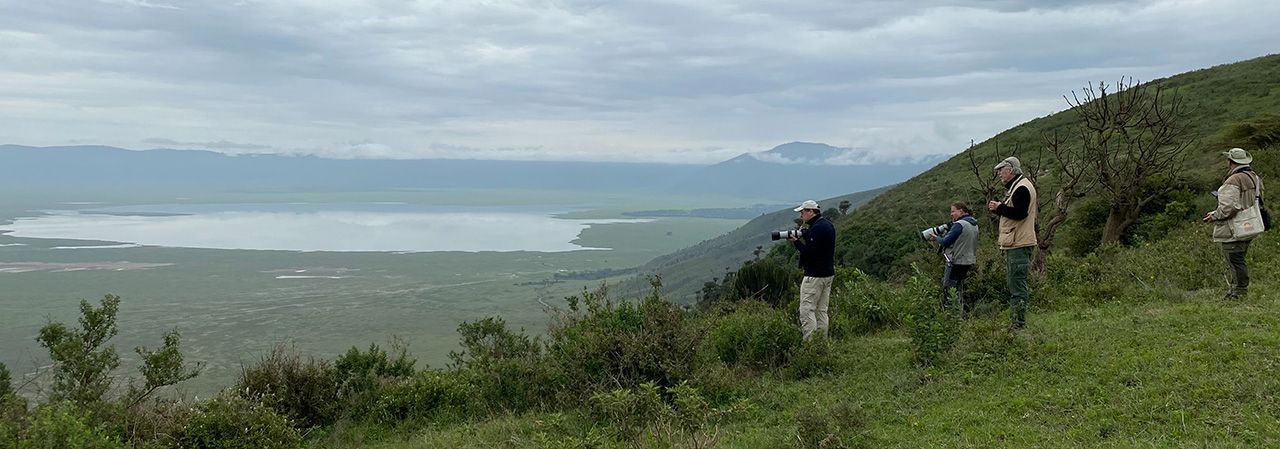
Soon we continued, saw a couple of Hildebrandt’s Spurfowls and then stopped to twitch Hunter’s Cisticolas.
Next stop was made on the same view watching place where we saw Mbulu White-eyes, but soon kept on driving higher. After some driving we found some Moorland Chats but the road was very curvy and narrow so we couldn’t stop in most of the places.
Finally we got to the plateau where were lots of masai huts – it was like a city! Anthony told us again not to take pictures of people or buildings so we just tried to find birds. After some searching we found a couple of Red-collared Widowbirds and then finally a single Jackson’s Widowbird too. These birds were quite far but some pictures were got and secretly we could get some huts to the background.
While we were driving again masai-children were waving to us. They were shepherding goats and I think youngest were maybe 4 years old. Soon we had to turn back and after we had seen a Speke’s Weaver and an Eastern Double-collared Sunbird, the next bird was a huge Martial Eagle that was soaring on the sky.
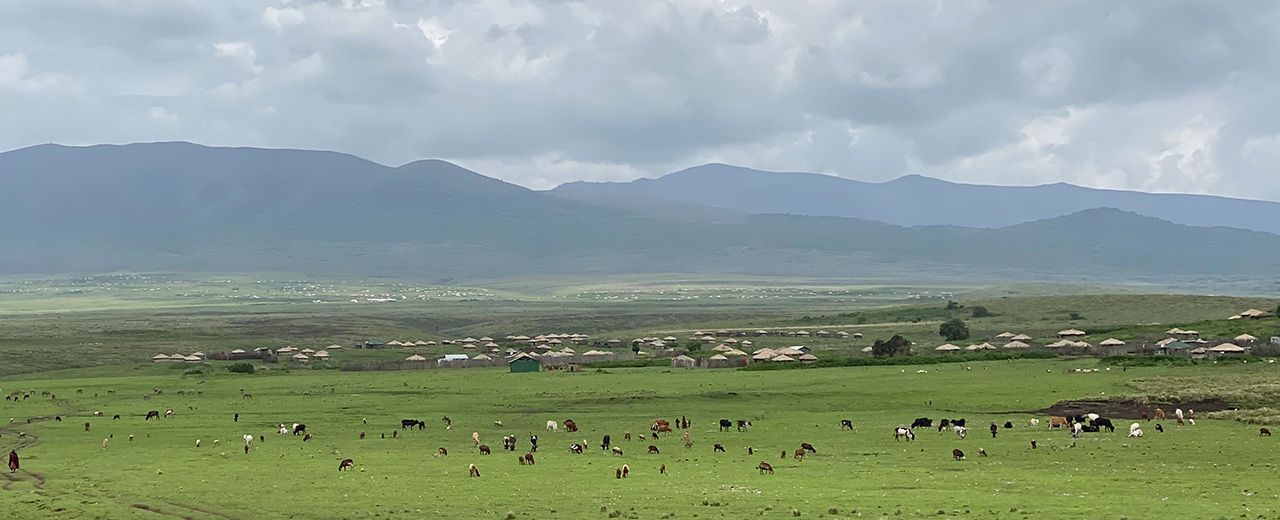
Then we stopped to a hillside where on dense vegetation we saw some Bar-throated and Brown-headed Apalis, an African Hill Babbler and a Tacazze Sunbird.
Once we were on the view watching place again, we met our second half of the group and saw now 7 distant Black Rhinos but there was no time to discuss as we were in a hurry to get out from the National Park. We had paid to stay in the park for 2 days and the time was getting full.
Then we had a long drive to Karatu where we parked to really comfortable Villa Lodge. Our cottages were really nice and in the evening we had some time to watch birds from our terrace. The bst bird we saw was a Black Sparrowhawk. In the evening everyone was very tired and it seemed that some of us clearly had covid. Anyway we still tried to listen to nightjars on the garden but without luck.
Some were too tired and maybe sick to join the log which was long as we had two groups observations that were very different. There would have been some lifer on the crater too but I think I had made the right choice.
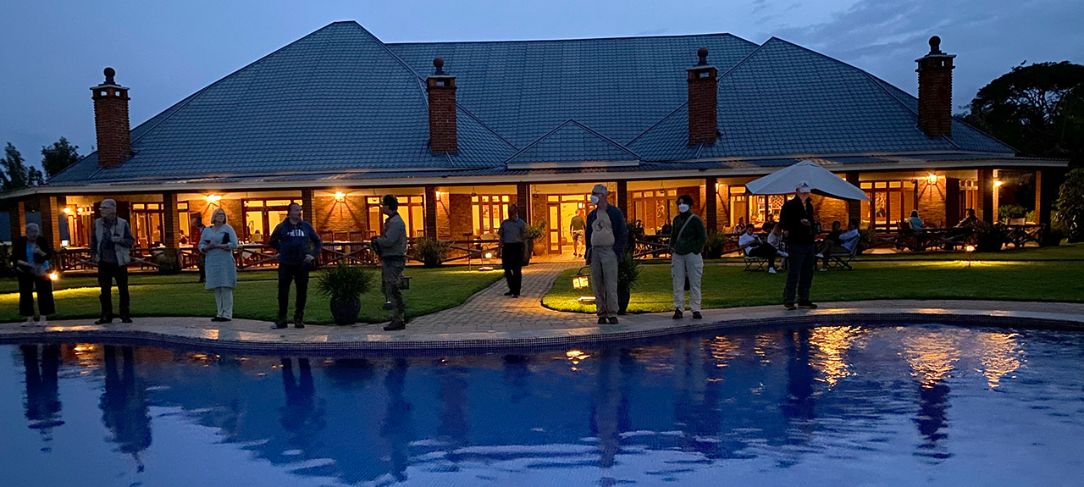
On the 13th of February we were in the same groups again but a couple of us had to stay in the lodge as they felt themselves sick. We drove to Lake Manyara National Park and we knew that the lake had been flooding so there weren’t many shorebirds around and also several roads were not driveable.
So once we were through the gate, we concentrated to forest-birds. It started very well as we soon found a couple of Southern Ground Hornbills that were perched on a dead tree quite far. But soon we got closer views of a Hamerkop, Silvery-cheekd Hornbills, White-headed Barbet couple, a Yellow-bellied Greenbul and a Crowned Hornbill. Then we saw an African Pygmy Kingfisher flying across the road and then we found a perched Crowned Eagle. And soon we found 4 Broad-billed Rollers which was again a bird that I had missed earlier. Then we got an unexpected tick when Anthony showed us a Collared Palm Thrush and then we still found a colorful Orange-breasted Bushshrike – we were really having a good time again!
It went well later too as with the tape we found Rufous Chatterers and on one tree we found a Gabar Goshawk eating a prey. Also a Fan-tailed Widowbird was seen and then we saw the first close by Elephants.
We did a short walking stop in one picnic-place and just before the stop we saw a Red-and-yellow Barbet which was luckily seen briefly on the picnic-area too. We also saw a couple of Yellow-spotted Bush Sparrows, a couple of African Hawk-Eagles were soaring on the sky but on the lake, that was quite far, we saw no birds at all. And soon we were driving again.
With help of the tape we found our next target which was a Purple-crested Turaco. It was quite far but was showing pretty well after all. It was one more amazing turaco to our list!
We were already driving quite fast back when Anthony found a flock of Crested Guineafowls feeding on the shadows under some vegetation. It was one more dream-bird that I had hoped to see.
Pretty soon we were back at the lodge where we ate well. In the afternoon only 5 of us were participating the trip. Some felt sick and tired and the garden was also a great place to try to see some soaring raptors.
We drove a short distance along the road and then stopped a couple of times just along the road in acacias and plantations. But once again all birds were new. We saw Black-crowned Tchagras, Holub’s Golden and Golden-backed Weavers, Southern Red and Black Bishops, a Bare-eyed Thrush, a D’Arnaud’s Barbet, African Paradise Flycatchers, Pale White-eyes, a couple of Violet-backed Starlings and so on. I finally got pictures of an Augur Buzzard and saw one familiar trip-tick – a Common Whitethroat. Other common Finnish summer-birds that we had seen had been numerous Barn Swallows, House Martins, Common Swifts, Northern Wheatears, a couple of Whinchats, Red-backed Shrikes, Blackcaps, Willow Warblers and Spotted Flycatchers, a couple of Yellow Wagtails and a single Osprey. I had really thought that we could see more Finnish migrants.
In the evening we had dinner (even though I wasn’t hungry at all) and then log again.
On the 14th of February after breakfast we were on the way to Ngorongoro highlands again but different side of the mountain. The first stop was made to twitch a Red-faced Cisticola which was found already while we were still moving. On the same place we saw Yellow-bellied Waxbills, a Green-headed Sunbird and a Grey-capped Warbler.
It had been raining at night so ground, especially the road was very muddy. Soon our boots had thick mud-layers, so it was quite slippery to walk. We continued a little bit higher to Elephant Cave trail where we met our local guide Emmanuel and an armed guide who were going to join us. They had already checked that Elephants and Cape Buffaloes had moved higher and weren’t on the track.
Soon we were walking along a curvy and slippery path in a mountain forest. Emmanuel knew the calls very well too so soon we started to find new birds. We found a couple of White-tailed Blue Flycatchers, a singing Red-capped Robin Chat, with Mika we saw briefly a Lemon Dove in flight and soon we heard a couple of Schalow’s Turacos which we also manged to see briefly again. Also Mbulu White-eyes and a Common Cuckoo were seen.
After a quite long walk we found a couple of Purple-throated Cuckooshrikes and immediately after them also an Orange-breasted Bushshrike. Also some Abyssinian Crimsonwings, an Amethyst Sunbird and a couple of African Paradise Flycatchers were seen. And when we were on the furthermost point just about to turn back, we found a Sharpe’s Starling that was visiting a nest-hole.
We still decided to get down to a small river but then climbed back up along a different, less slippery, path and started walking back. Birds were quiet as morning was over. So we were pretty soon back in the parking place. The best bird we saw on the way back was a Grey Cuckooshrike.
We still had lunch in the lodge and then we packed our cars and started a longer drive to Tarangire. And again we soon found out that birds had changed completely!
Tarangire
The first lifer was a Red-necked Francolin but also several Yellow-collared Lovebirds were seen here and Mika got his World-tick number 5000! At the gate we walked a little and saw White-browed Sparrow-Weavers, Northern Red-billed Hornbills and Ashy Starlings. And when we were driving again we soon saw the first Yellow-necked Spurfowls.
We also saw some mammals and got pictures of Common Warthogs, Common Dwarf Mongooses, Elephants and Ostriches – oh the last one is claimed to be a bird… In nice evening light it was good to get pictures of spurfowls, hornbills, Northern White-crowned Shrikes, a Pygmy Falcon, a Fork-tailed Drongo and a Blue-cheeked Bee-eater.
Our accommodation was an amazing Safari Lodge which had a terrace with a view to river and savanna. In the evening we celebrated Mika’s 5000th tick with champagne and enjoyed the view and some birds. A Greenshank was heard as a trip-tick and we also saw Mottled Spinetails and when it was almost dark some of us saw a Freckled Nightjar flying over very close. And while we were having a log, an African Scops Owl started to call nearby.
On the 15th of February after a night in a tent we walked to have breakfast when the sun was rising. Then we got pictures of an African Scops Owl that was sleeping in the closest tree next to the terrace. I managed to find a Black-throated Weaver and get some pictures of White-headed, Red-billed Buffalo and Rufous-tailed Weavers before we left by cars to the park again.
We photographed a nice couple of Wahlberg’s Eagles, Giraffes, Banded Mongooses, Crested Francolins and so on before we found the first lifer which was a flock of funny Green Wood Hoopoes. Then we found some Red-necked Spurfowls, White-bellied Bustards, and so on before the next lifer which was a fruit-eating Red-bellied Parrot.
We got good pictures of Magpie Shrikes, Lilac-breasted Rollers, White-bellied Go-away-birds and a Nubian Woodpecker and then suddenly we found a perched Greater Honeyguide. Then a Knob-billed Duck that was perched on a tree-top. In a shore of a pool nearby we saw a couple of Black-faced Sandgrouses and then the male Knob-billed duck landed to the pool to chase females. There were also White-faced Whistling Ducks, Egyptian Geese and then after some more driving there was another duck on the tree-top – a Spur-winged Goose. And finally I managed to see a Mosque Swallow so well that I could take a lifer.
A short stop in a picnic-place produced pictures of Superb Starlings and from the view watching place we saw a couple of Water Thick-knees along the river. And when we were on the move again, we found a perched Martial Eagle and in the same time there was a big Monitor going to swim to a pool.
Of course we had to take pictures of huge baobab trees too and check every single branch if there was a Leopard. But only mammals we got good pictures were Zebras and Elephants which were now seen quite a lot. The next bird-lifer was a Senegal Lapwing and soon we found another Verreaux’s Eagle Owl which was calling on a branch a little bit too far. There was also a female on the same tree but hiding behind all branches.
The next new bird was a Buff-crested Bustard which came too close to fit to the pictures. We also saw a dark morph Gabar Goshawk. Also both Great Spotted and Levaillant’s Cuckoo were seen briefly.
We drove back to the lodge to have lunch and then had some time to photograph tame birds in the lodge-area. A beautiful Red-headed Weaver was building its nest next to the swimming pool. It was amazing red bird! I also got pictures of Superb Starlings, Red-cheeked Cordon-bleus, Yellow-collared Lovebirds, an African Hawk-Eagle that was soaring close to the view-watching place, a Beautiful Sunbird, Von der Decken’s Hornbills, buffalo weavers, Ashy Starlings, Slate-colored Boubous, Yellow-breasted Apalises and also Unstriped Ground Squirrels.
It seemed that we had seen so many birds already that new lifers were not so easy anymore. So in the afternoon we had more time to photograph and it was good to get nice pictures of Secretarybird. We also saw Two-banded Coursers, Senegal Lapwings and several gazelles and so on before we found the first targeted lifer – a flock of Northern Pied Babblers and almost right away after them we found a couple of Pale Flycatchers. We also got pictures of a Red-billed Oxpecker cleaning Impalas ears and also African Grey Hornbill showed very well.
We also got pictures of a Yellow-billed Stork, Yellow-necked Spurfowls, Black-faced Sandgrouses and Blue-capped Cordon-bleus. In the evening we were in the lodge early enough to get more pictures of birds there. And then it was time to eat and have the log again.
On the 16th of February we were out a little bit earlier as we wanted to get to bustard-areas as early as possible. It had been raining at night so roads were very muddy and soon it was clear that we couldn’t drive any further than on the previous day. But already on the way we could see that bustards were very active as we saw several White-bellied Bustards flying around.
Soon we found the first Buff-crested Bustard too and also a Black-bellied Bustard that we first hoped to be a Hartlaub’s Bustard but no. But then in the same place we saw a distant bustard in flight and it was much paler – it was a Hartlaub’s Bustard! We also saw a Pallid Harrier, a Knob-billed Goose, Yellow-necked Spurfowls, a Pangani Longclaw and other familiar birds and mammals. We got really good pictures of Hyenas as a couple of them were cooling in a small water-pool.
Red-and-yellow Barbet couple was mating, Yellow-billed Oxpeckers were climbing on Giraffes neck, Cavendish’s Dik-dik was waving its nose while watching at us, Red-bellied Parrot was eating fruits, Jacobine Cuckoo flew over us, a turtle was running over the road and Banded Mongooses were wrestling on the track. So it was just a basic morning in savanna…
It was also nice to get better pictures of a D’arnaud’s Barbet, a Meyer’s Parrot and a flying Bateleur. Then on one dead tree we saw a couple of Southern Ground Hornbills which was also nice to get photographed. Also Ostriches were showing well and we also saw a Striped Kingfisher, Mottled Spinetails and briefly a couple of Hildebrandt’s Spurfowls.
Once we were back at the camp we found a Marico Sunbird and a few Red-billed Firefinches and then Jyrki who was going to photograph Ashy Starlings got accidentally quite close to a huge Python. Unfortunately the snake was going to hide us to a water pipe that went under the track, so only a half a meter was visible when we went to see it.
After the lunch we started to drive towards Arusha but luckily we still had some driving in savanna both before and after the gate. So we still saw plenty of birds and mammals. Especially Elephants were showing very well. Then on the gate we saw Grey-headed and Woodland Kingfishers and a Red-chested Cuckoo which all were photographed.
Then we had a long drive to Arusha and on the way we saw several villages more active as it was a market-day. Finally we parked to Korona Villa garden and now if ever the name of the hotel sounded awful, probably several of us was having covid right now…
On the 17th of February we woke up a little bit earlier and after breakfast we were soon driving north from Arusha. It was surprisingly long drive but on the way we saw a Lizard Buzzard on the wire and several flocks of White-fronted Bee-eaters.
Finally we reached the lark-plains about at 9 a.m. and Anthony called to a masai who was working with endangered and endemic Beesley’s Lark. Soon we saw this man standing in the middle of the plains and started driving slowly towards him. He had been searching for these larks from 7 a.m. and had just found the birds! And once we got out, we soon saw 2 Beesley’s Larks! And in short walk on the area, we saw altogether 5 of these birds that is known only in this area in the whole World! On last count a couple of years ago only 23 birds had been found! This plateau has almost every year so hard winds that the whole vegetation flies with the wind and destroys many nests of birds.
We managed to get pretty good pictures of Beesley’s Larks and after that we found also Fischer’s Sparrow-Larks, Red-capped Larks and Chestnut-bellied Sandgrouses and then on another stop we found a couple of Athi Short-toed Larks and a single Short-tailed Lark. Also Northern and Isabelline Wheatears were seen and a couple of Temminck’s Coursers.
Then we continued to acacia area where we found a couple of Pygmy Batises, a Grey Wren Warbler, a Red-and-yellow Barbet and a small flock of White-headed Mousebirds. In this area we also met the first angry local people who probably wanted to get some money from us. They said that we were on their land, but for sure we weren’t. And once we were driving again we found a Kori Bustard that decided to fly very close to us and it was nice to see and photograph this heaviest flying bird of the World in flight.
Soon we found a female Common Rock Thrush and then the last stop was made in another acacia area where we found some Tiny Cisticolas and Foxy Larks, a Straw-tailed Whydah, a Northern Crombec, a couple of very active Scarlet-chested Sunbirds and then the last lifer of the trip was a Southern Grosbeak-Canary which I couldn’t photograph as my battery died. It was the first time I didn’t have extra-battery with me.
On the way back we still stopped to tick one more cisticola but luckily we stayed critical and identified the bird as a Winding Cisticola instead of something else.
Finally we were back in Korona Villa where we had excellent pizza and them it was time to say thank you to Anthony as he was leaving. We had collected tips to him and also to drivers and gave them after we all had eaten. Then we did all the packing and still had almost whole log before we had to leave to Arusha airport with our drivers.
Luckily there were no covid-tests at the airport as we really didn’t want to stay in Tanzania in quarantine. A couple of week old PCR-test papers were only asked.
Our first flight was to Dar Er Salaam where were no tests either. We had some time to do some shopping even though we had to check-in our luggage again. Then the next long flight was to Qatar Doha. I managed to sleep for some time and then in Doha we had again some hours to wait. Last flight was long and I slept almost whole time. Then we landed to snowy Helsinki-Vantaa airport.
While we were waiting for our luggage also Peking flights luggage were on the same belt. There were Finnish women icehockey team and also some skiers, for example Iivo Niskanen so there were many Olympic medals hanging on the necks. We tried to stay as far as possible from these sport-heroes as we probably still had covid.
Finally it was time to say thanks and goodbyes to our group. My father was picking me up but as I thought that I might have covid too, I just gave him the souvenirs and took my car and started driving towards Parikkala. My father had to take a train back to Kirkkonummi. I was at home pretty early and as it was Saturday I had good time to relax.
But during the weekend I felt myself sick and it wasn’t a surprise that homemade covid-test gave positive results. And on Monday I got positive also from real test. So I still stayed away from work for 4 days.
Our trip had been amazing! Our group had seen 474 species of birds. I had missed 6 species that had been seen only from other car or then by one or two people and then I had of course missed some species that had been seen only in Ngorongoro crater. So I had seen 459 species which 356 had been lifers! There are amazing numbers of birds in Africa! We had seen amazing mammals and taken too many pictures on the trip too! I think this was not my last trip to Africa! Thanks to our Tanzania Birding and Beyond Safaris company and our guide Anthony, drivers and other helpers and of course to our group, especially to Jyrki.
For the full Trip Report, see Northern Tanzania 7th to 17th of February 2022, by Mr Janne Aalto (Sweden).

